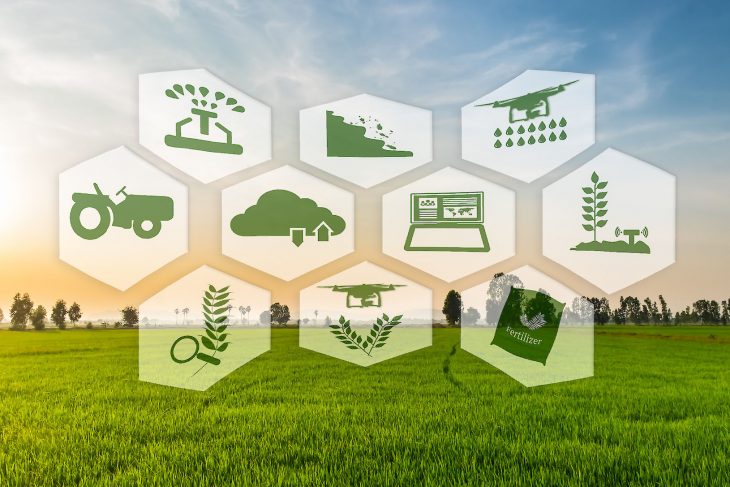One of the most aligned applications is providing documentation and authentication of records for crop or livestock certifications. For crop certifications, the use of a blockchain allows for real-time collection of information linked to a field, by the acre or any identified area of land. For example, the blockchain allows a producer to track a crop from seed to sale using information many producers are already collecting.
When planting, the producer can enter the brand, strain, supplier and date upon which planting took place. This would be the first block for that year’s production chart for a given field. Each application of water, fertilizer, herbicide, or pesticide can be recorded along with the volume per acre. This blockchain could further be extended through processing and manufacturing of food products using the produced crops so that a food product manufacturer can demonstrate to consumers that their products meet the certification requirements from field to table.
The blockchain can be connected directly to field computers and sensors so the producer can populate data blocks automatically with little effort. Thus, at the end of each growing season, or historically over a certain period of time, the producer can demonstrate compliance with the standard practices to obtain certification through the blockchain. Because the data in a blockchain is collected in real-time, there is less chance of missing a component required for certification, lag time in preparing documentation is eliminated, and the certification process is less arduous on the producer. Accordingly, carrying out the certification process using the blockchain results in a much more streamlined and less burdensome process, and in many cases certification could even be automated.
Collection and monetization of collected data. Another groundbreaking application of blockchain is collection, securing, and potential monetization of data collected by a producer. In essence, think of each block of your data like a library book and the blockchain like a library building. The technology allows the originator of the data to control who enters the library and tracks who “checks out” your data.
By securing your production and field condition data in the blockchain, you can control who gets to access your data, what portions of the data they get to use and set terms on how they can use the data. This puts control back into the hands of the producers whose actions, fields, and equipment create the data. As such, the data owner may allow others to access and use the data for a license fee, thus creating an additional revenue stream for the producers.
Smart contracts. Another promising application of blockchain technology is the implementation of smart contracts. A smart contract is a contractual relationship in which one or more contractual requirements is self-executing. Because blockchain platforms can incorporate computational logic, smart contracts — which define a contractual relationship — can also include self-executing commands to automate the performance of certain contractual obligations when the blockchain recognizes certain conditions are present. For example, in sourcing fertilizer for a field of crops, the ordering of an application of fertilizer can be automated based upon the sensor readings in the field, and the subsequent payment for the fertilizer can be automatically initiated upon confirming delivery of the fertilizer at the field.



